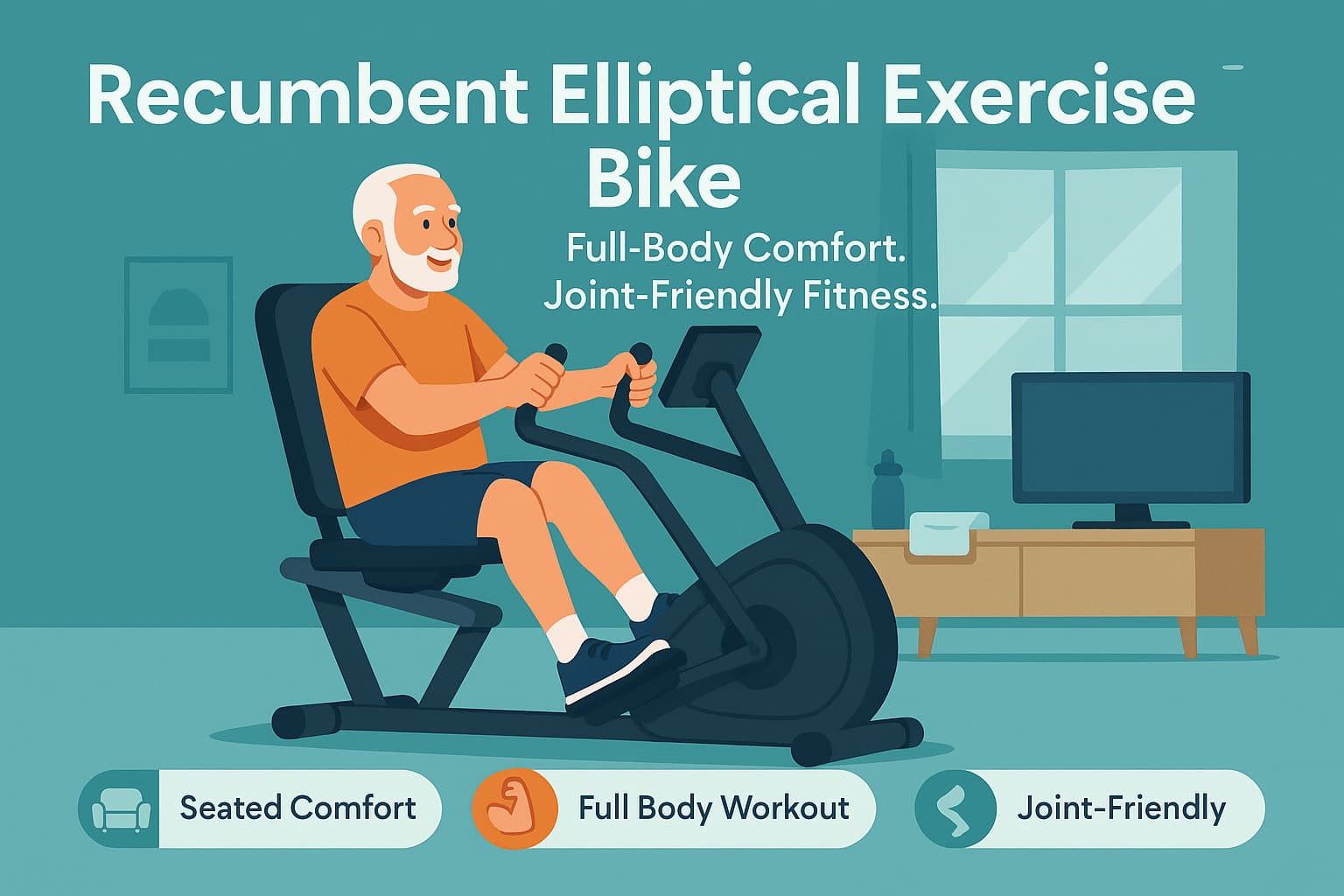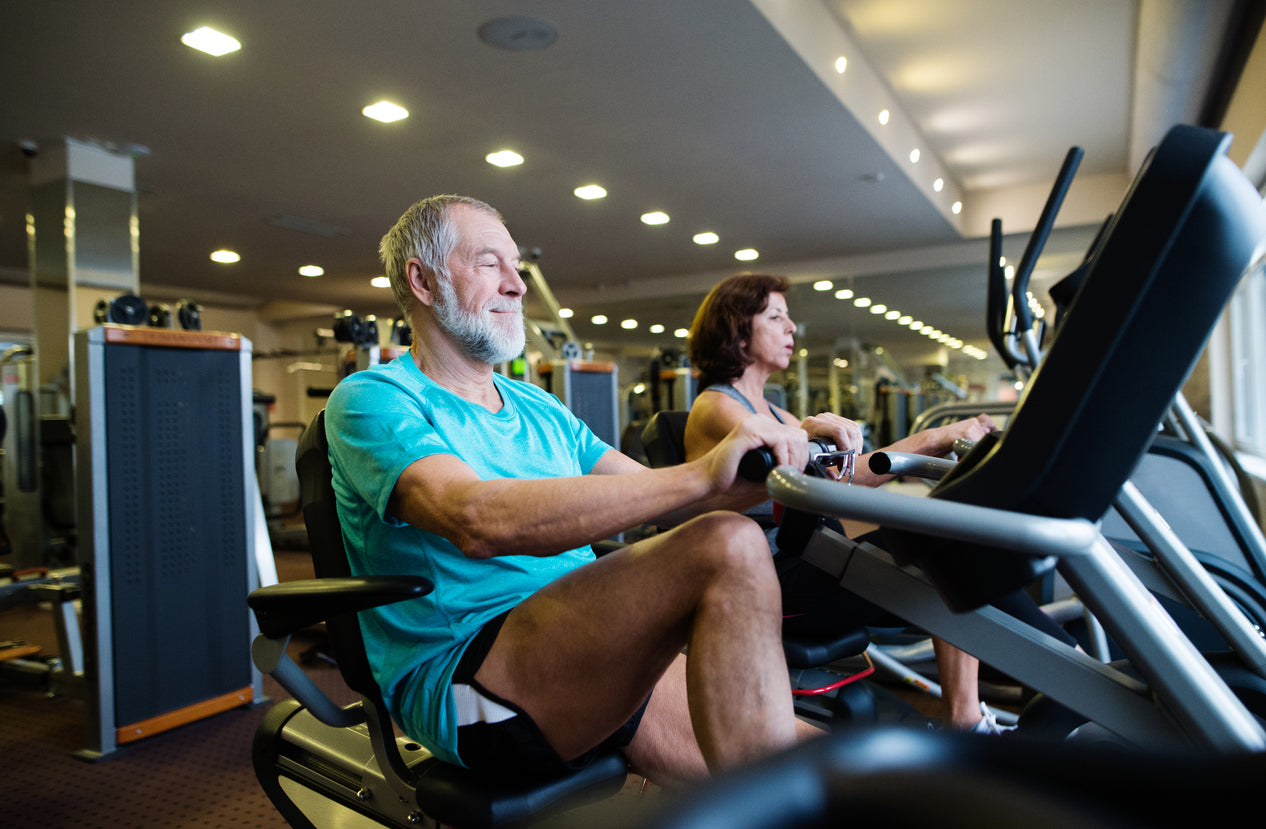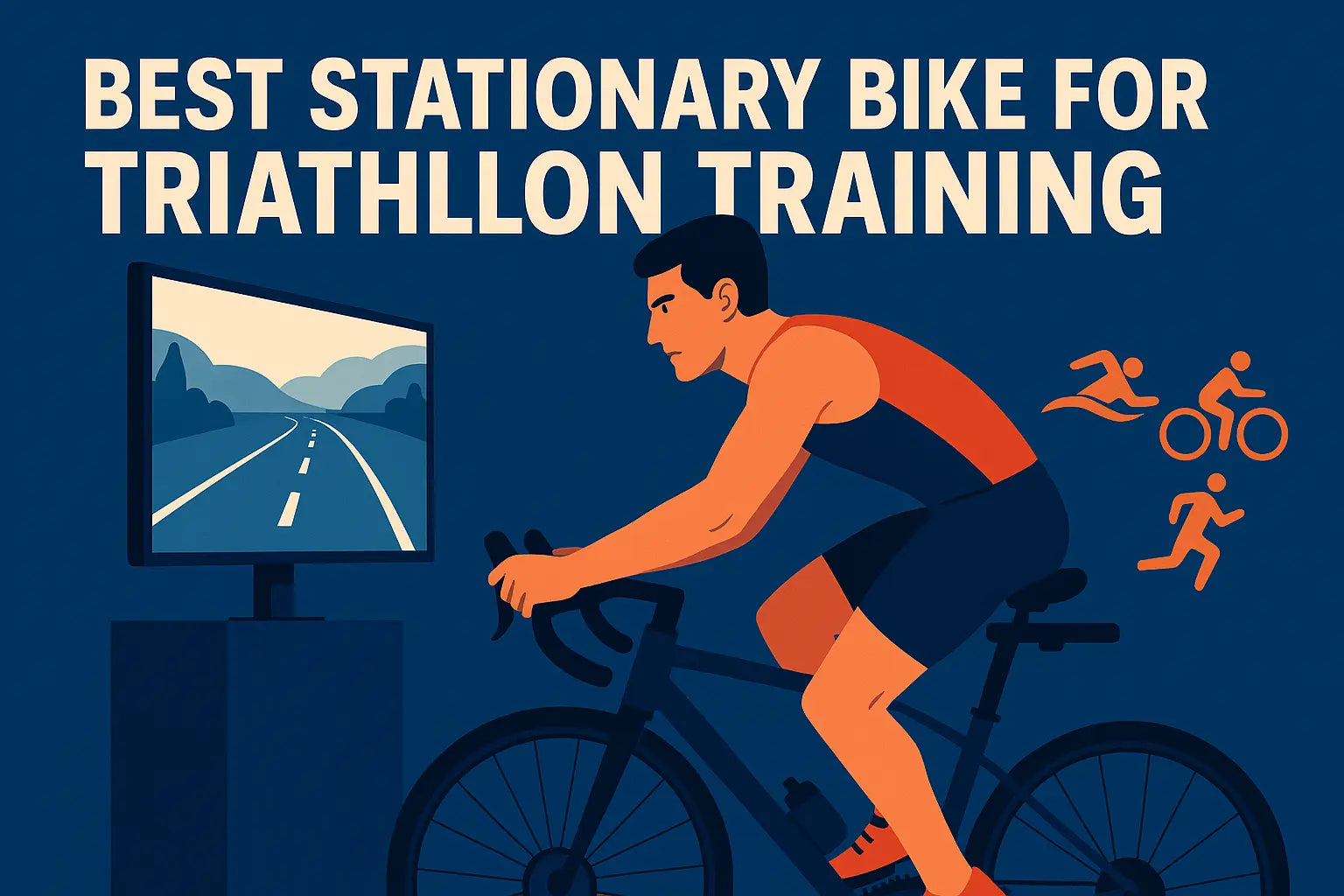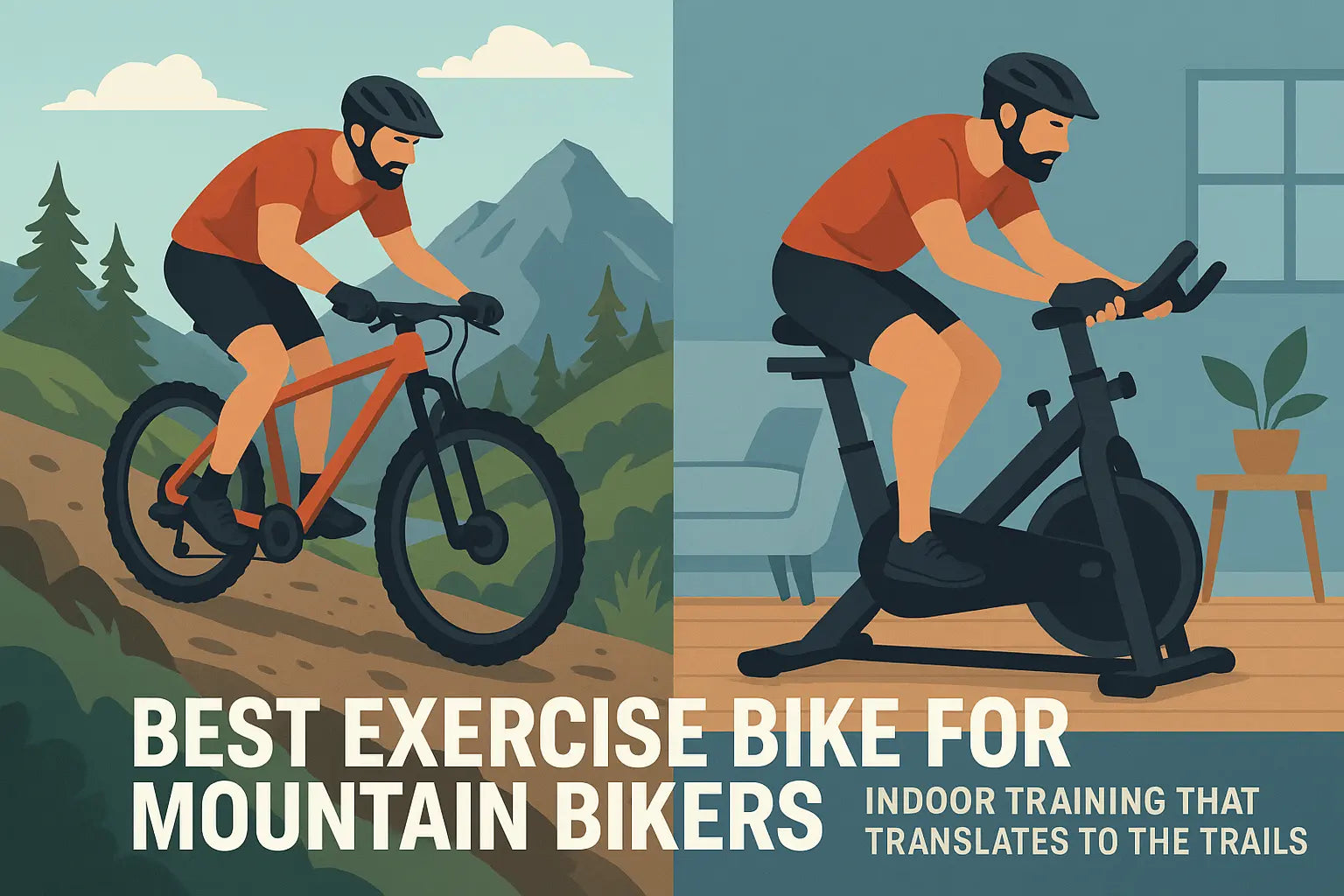According to a 2018 study titled "Home-based cycling program tailored to older people with lumbar spinal stenosis: Barriers and facilitators" [1] published in the journal Annals of Physical and Rehabilitation Medicine, for seniors with lumbar spinal stenosis, riding a home recumbent bike at home is a safe and effective way to stay active.
In this study, 58.3% of participants self-reported clinical improvement after 3 months of consistent cycling, including reductions in radicular pain and disability. This supports the conclusion that recumbent bikes, which offer a semi-reclined position with back support, can be an effective and spine-friendly form of exercise. They minimize pressure on the spine while providing cardiovascular benefits, promoting blood flow, strengthening supporting muscles, and helping manage pain without additional spinal stress.
What Is the Best Exercise Equipment for Spinal Stenosis?
The best exercise equipment for spinal stenosis is the stationary bike, particularly the recumbent style. It provides lumbar support, low-impact movement, and a stable seated position—making it ideal for managing lower back pain and nerve compression.
A 2023 systematic review in Exercise Treatments for Lumbar Spinal Stenosis [2] found that aerobic exercises like cycling, combined with stretching and strength training, were among the most effective interventions.
Other spine-friendly options include:
-
Elliptical Trainer – Smooth, weight-bearing cardio with minimal spinal compression
-
Swimming or Aqua Therapy – Nearly zero joint and spinal stress
-
Treadmill (Walking Only) – Light walking on flat surfaces, if well-tolerated
Always consult your healthcare provider before beginning a new exercise routine.
What Kind of Bike Is Best for Spinal Stenosis?
The best bike for spinal stenosis is a physical therapy recumbent bike, because its reclined seat and back support reduce pressure on the spine while still providing safe, low-impact cardio exercise.
This conclusion is further supported by a study titled "Exercise reduced the need for operation in lumbar spinal stenosis. Circulatory load in the form of cycling gave good effect" [3] (Tomas Nord et al.), which found that nearly half of patients who completed a 4-month stationary cycling (upright and recumbent position) program at about 70% of their maximal capacity no longer required surgery. This highlights the clinical potential of cycling in conservative treatment plans for spinal stenosis.
The best bike for spinal stenosis depends on the location of the condition and the individual’s mobility level. Two main types of stationary bikes are considered:
- Upright Bike: Better suited for individuals with lumbar spinal stenosis who benefit from leaning forward while exercising. This posture may open the spinal canal and ease nerve compression.
- Recumbent Bike: Ideal for users who require more back support or have issues with balance, knee, or hip joints. While it does not provide as much flexion as an upright bike, it still offers a comfortable, safe, and effective workout.
Our Vanswe RB405 Stationary Recumbent Bike is designed with lumbar support and easy step-through access, making it ideal for individuals managing spinal stenosis. Its smooth magnetic resistance system and adjustable seat help maintain proper posture and reduce pressure on the lower back.

RB405 Hightlights
- Ultra-Quiet Magnetic Resistance – Features an 11 lb flywheel and noise levels under 10dB for a peaceful home workout.
- High Weight Capacity – Supports up to 400 lbs, ensuring stability and durability for all fitness levels.
- Adjustable for All Heights – Accommodates inseam lengths from 26” to 41”, making it suitable for a wide range of users.
- Ergonomic Seat & Backrest – Provides superior comfort with a cushioned seat and supportive backrest for extended workouts.
What Is the Best Exercise for Spinal Stenosis?
Because spinal stenosis often improves with gentle movements that reduce nerve compression and stabilize the spine, the Planks, Pelvic Tilts, Knee-to-Chest Stretches, Standing Quad Stretches, Swimming and Cycling are considered the best exercises.
- Planks (traditional and side): Strengthen core without spinal flexion or extension.
- Pelvic Tilts: Promote lumbar stability and posture awareness.
- Knee-to-Chest Stretches: Reduce lumbar tension and improve flexibility.
- Standing Quad Stretches: Support hip and leg mobility.
- Swimming or Pool Walking: Offers gentle resistance without spinal loading.
- Cycling: Provides cardiovascular benefits in a low-impact format.
Perform all exercises slowly and with proper form. Avoid pushing into pain and ensure movements remain controlled and low impact.
What Activities Should Be Avoided with Spinal Stenosis?
Managing spinal stenosis means avoiding movements that compress or strain the spine. These include:
- High-impact sports: Running, jumping, and contact sports can worsen symptoms.
- Excessive spinal extension: Backbends or deep yoga poses that arch the spine.
- Heavy lifting with poor form: Especially with a rounded back.
- Sudden twisting motions: Especially for cervical stenosis.
- Prolonged inactivity: Lying or sitting too long can increase nerve pressure.
- Ignoring pain signals: Continuing activity despite pain can lead to further injury.
Instead, focus on controlled, gentle movements and active recovery strategies.
Conclusion
A recumbent bike can be an excellent, joint-friendly solution for those with spinal stenosis—offering comfort, support, and cardiovascular benefits without aggravating symptoms. When combined with appropriate core and mobility exercises, and by avoiding harmful activities, it forms a strong part of a pain management strategy. As always, seek guidance from healthcare professionals to tailor your exercise plan for optimal results.
Refference
- Pauwels C, Roren A, Gautier A, Linières J, Rannou F, Poiraudeau S, Nguyen C. Home-based cycling program tailored to older people with lumbar spinal stenosis: Barriers and facilitators. Ann Phys Rehabil Med. 2018 May;61(3):144-150. doi: 10.1016/j.rehab.2018.02.005. Epub 2018 Feb 27. PMID: 29499383.
- Comer C, Williamson E, McIlroy S, Srikesavan C, Dalton S, Melendez-Torres GJ, Lamb SE. Exercise treatments for lumbar spinal stenosis: A systematic review and intervention component analysis of randomised controlled trials. Clin Rehabil. 2024 Mar;38(3):361-374. doi: 10.1177/02692155231201048. Epub 2023 Sep 16. PMID: 37715644; PMCID: PMC10829420.
- Nord T, Kornerup U, Grönlund P, Reuterwall C. Träning minskade behovet av operation vid lumbal spinal stenos--Belastning av cirkulationsapparaten i form av cykling gav bra effekt [Exercise reduced the need for operation in lumbar spinal stenosis. Circulatory load in the form of cycling gave good effect]. Lakartidningen. 2015 Jan 27;112:C7XP. Swedish. PMID: 25625727.
Latest Articles







